Petros multifuel station in Batu Kawa on track to start operations soon — SEDCE
KUCHING (June 22): The Petros Multifuel Station (MFS) Batu Kawa, the second flagship station equipped with hydrogen supply and 11th station in Sarawak, is on track to being operational soon. Deputy Premier Datuk Amar Dr Sim Kui Hian in a recent visit to the site was briefed on its progress and features by the Sarawak Economic Development Corporation Energy (SEDCE) team. “The physical structure of the MFS is fully completed, and the team is working closely with the regulatory authorities before the station can be operated,” said SEDCE in a statement. MFS Batu Kawa is the second flagship station after MFS Darul Hana, which is designed for conventional fuels, fast EV chargers and hydrogen dispensing. It will be getting its hydrogen supply from MFS Darul Hana, where the onsite hydrogen plant with 150kg production capacity is located, and the hydrogen supply will be transported via tube trailers where Mobile Hydrogen Refuelling System will be used for dispensing the molecules. This distribution model will be the first of its kind in the region. Earlier this year, SEDCE appointed Koperasi Bomba & Penyelamat Malaysia (KOBOPEM) as the operator for MFS Batu Kawa, which aims to support the cooperative as sustainable income stream for its members. SEDCE is responsible for developing the hydrogen value chain and downstream retail oil and gas business in Sarawak under the brand name Petros MFS. To date, there are 10 fully operating stations namely MFS Darul Hana (Jalan Tun Salahuddin), MFS Daro (Jalan Matu-Daro), MFS Kanowit (Jalan Kubu), MFS Kuala Matu (Jalan Daro–Kuala Matu), MFS Brooke Drive (Sibu), MFS Selangau (Pan Borneo-Selangau), MFS Tatau (Pan Borneo Tatau), Kapit (Jalan Bleteh), MFS Sungai Asap (Jalan Bintulu-Bakun), MFS Jepak (Kampung Jepak). SEDCE said with the completion of MFS Darul Hana and MFS Batu Kawa, four more flagship MFS are in the pipeline namely Sri Aman, Sibu, Bintulu and Miri, with construction for Bintulu (Jalan Sultan Iskandar) scheduled to begin in the second half of this year. These flagship MFS are designed to form the backbone of Sarawak’s hydrogen refuelling network along its main cities. In comparison, non-flagship or standard MFS provide conventional fuels and EV charging facilities. Meanwhile, it said three MFS are currently under construction, and more than 40 sites are being processed for construction across Sarawak. Upon completion, these stations will also provide a network of EV charging facilities on top of conventional fuel to its customers. Source
Sarawak to establish Lake Development Authority by 2030
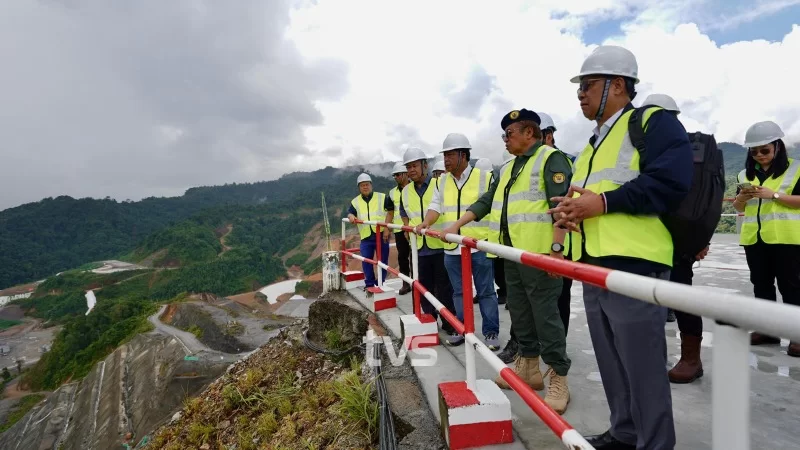
Abang Johari (second right) when visiting Baleh Hydroelectric Dam project. Photo: TVS KAPIT: A Lake Development Authority (LDA) is set to be established by 2030 to oversee sustainable development of lakes and dams across Sarawak. Premier Datuk Patinggi Tan Sri Abang Johari Tun Openg said the authority will manage all lakes in Sarawak, including major dams. These include Batang Ai, Baleh, Murum, Bakun, and other natural lakes identified for high-impact, environmentally responsible development. “There must be a balance between the project itself. The power generation project and sustainability in terms of environmental preservation. It has to be done together. “I must say that we have learned lessons from the development of Batang Ai and Bakun, and we are now adjusting ourselves in line with global needs to preserve the environment in response to climate change,” he said. He said this during a press conference after visiting the Baleh Hydroelectric Dam, here today (June 16). Abang Johari also expressed confidence in Sarawak Energy Berhad’s (SEB) ability to complete the Baleh project by the targeted 2030 timeline. He said the project, combined with the 1-gigawatt capacity from combined cycle gas plants in Bintulu and Miri, boosts the state’s energy supply. “If we add everything together, we now have around 7 gigawatts, while our actual need is only about 3 gigawatts,” he explained. By 2030, he said Sarawak expects to reach 10 gigawatts in generation capacity, not including the proposed solar or hydrogen energy projects. He added that planned solar projects in Bakun and Murum could each contribute another 1 gigawatt. “Excluding our efforts on hydrogen, it means we already have enough energy resources—with about 60 to 70 per cent coming from renewable sources. “And that is our green power,” he asserted. The Premier expressed optimism that no other region currently matches Sarawak’s green energy output, which will help attract more investors to the state. “We will also enter the Asian Green Room. I believe SEB will meet the targets through 2035, perhaps even beyond,” he added. Source
Solar on track for another record year, says report
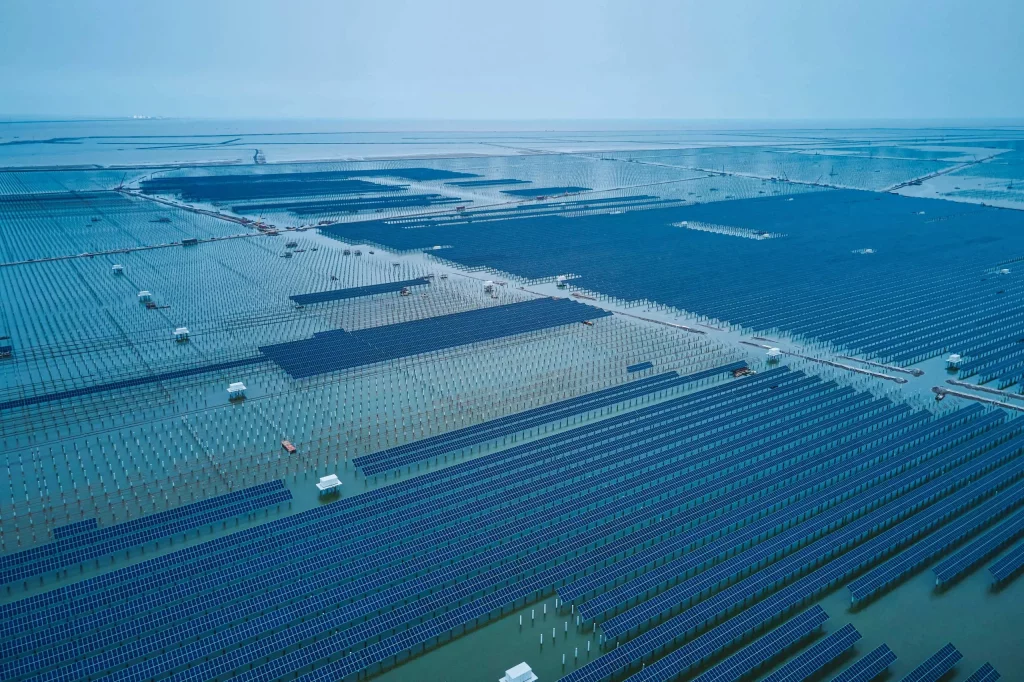
PARIS (Sept 19): The solar industry is due to grow by nearly a third in 2024, beating forecasts as it adds 593 gigawatts of additional capacity, the majority of them in China, according to a report released on Thursday by the Ember think tank. “This is a 29 per cent increase compared to the previous year, maintaining strong growth following an estimated 87 per cent surge in 2023,” the report said. “Yet again, solar power is growing faster than people expected, as it establishes itself as the cheapest source of electricity globally,” said Euan Graham, electricity data analyst at Ember. Illustrating the lightning speed at which solar is growing, Ember projections show that new solar capacity added in 2024 alone will be more than the 540 GW of additional coal power added around the world since 2010. China remains the world leader in the sector and is expected to add 334 GW, or 56 per cent of the world total in 2024. It is followed by the United States, India, Germany, and Brazil, with the top five countries accounting for 75 per cent of the new solar capacity in 2024, the report said. Grid capacity and battery storage were key to maintaining growth in the sector, the report said. “As solar becomes more affordable and accessible, ensuring sufficient grid capacity and developing battery storage is crucial for handling power distribution and supporting solar outside of peak sunlight hours,” it said. “By addressing these challenges and sustaining growth, solar power could continue to exceed expectations for the remainder of the decade.” — AFP
Sarawak commits to renewable energy leadership, seeks international collaboration
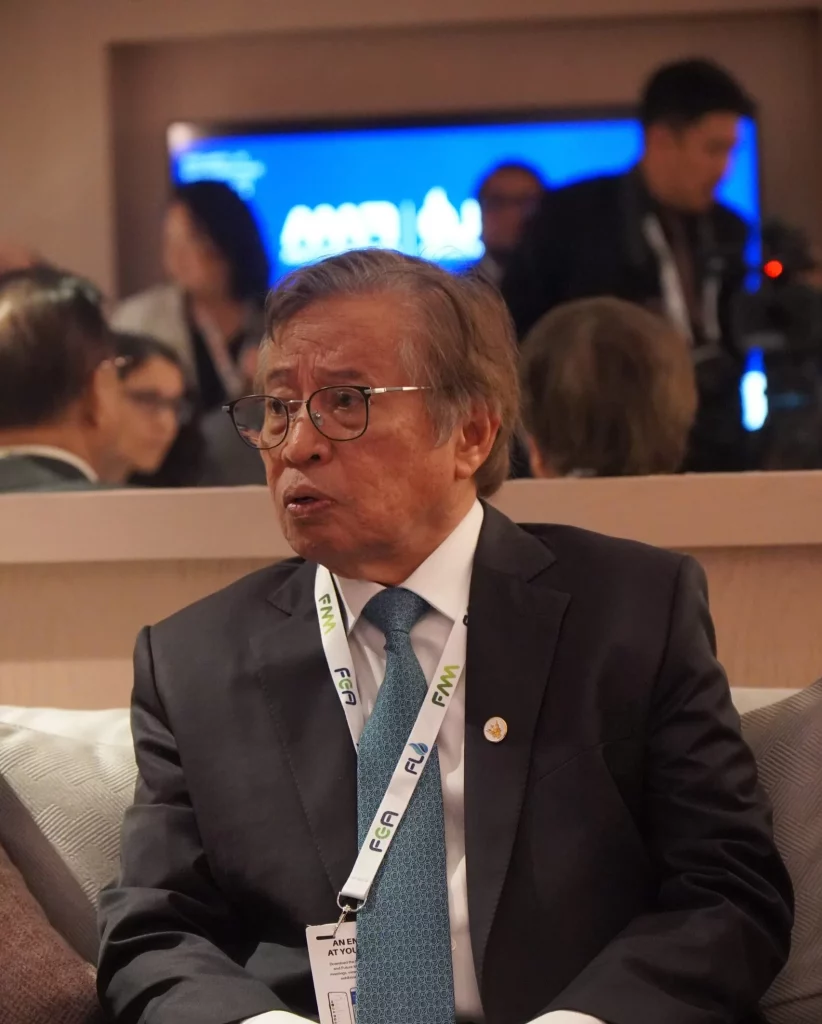
BANGKOK: Premier Datuk Patinggi Tan Sri Abang Johari Tun Openg has underscored Sarawak’s commitment to harnessing and maximising its renewable energy resources through international collaboration and technological learning. Stating how Sarawak is blessed with natural resources that can generate renewable energy, he said the Sarawak government is actively seeking solutions through the latest technology to add value to these resources. “The whole world is looking at us (Sarawak) because we have the vision, and we want to translate our vision into action. “What is important now is the execution action. If you have the vision, but you do not execute it, it remains just a vision.” Abang Johari made these remarks during a press conference after delivering his keynote address at the Future Energy Asia Strategic Summit 2024. He said Sarawak’s push for green economy is in line with global transition from coal and fossil fuel to clean and renewable energy. He added that Sarawak can manage its economy sustainably while incorporating the latest technologies by prioritising clean energy. “Sarawak’s energy generation mix comprises 70 per cent hydropower and supplemented by a small percentage of natural gas and coal which is slated for phase-out. “This actually places Sarawak ahead of the 2050 net zero or carbon neutrality target which means we are achieving carbon negativity well before the deadline.” Abang Johari said Sarawak has the advantage of sharing this success with the world thus inviting collaboration for technological partnership. At the same time, he pointed out that Sarawak has emerged as a key player for interconnection in assisting the fulfilment of the Asean Power Grid. He said through Sarawak Energy Berhad (SEB), Sarawak is supplying energy needed by Indonesia in East and West Kalimantan. “We are also supplying energy to Singapore and Brunei which means we are assisting three neighbouring countries. If we scale up our production, we can create more job opportunities and economic growth in the region.”
Premier outlines 10-20-30 as sustainable energy future for Sarawak
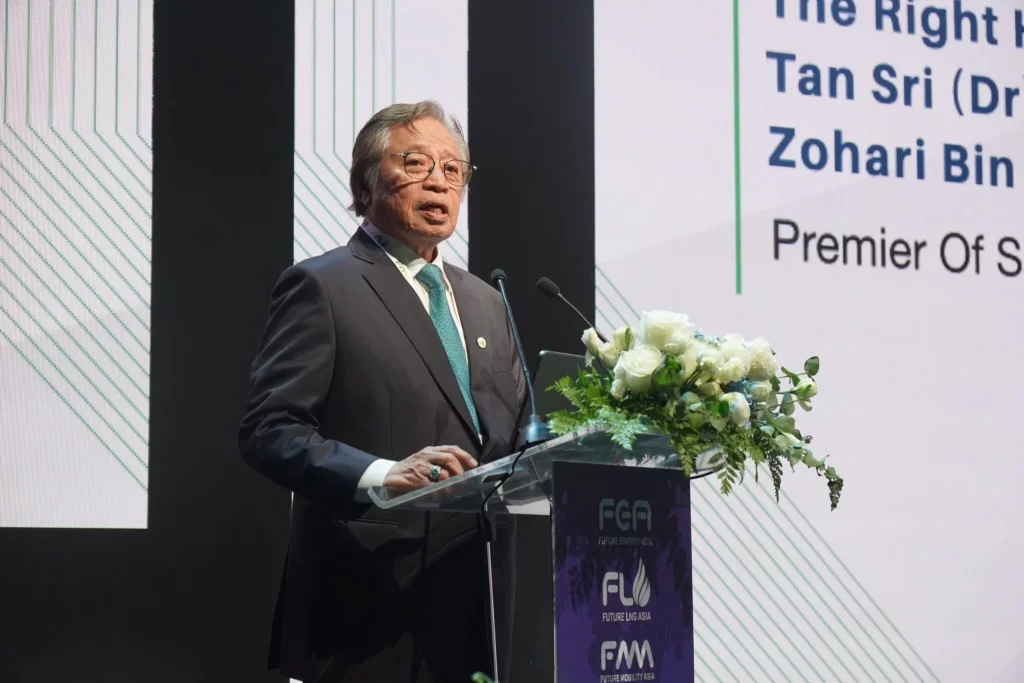
BANGKOK: 10, 20 and 30 are the main numbers for Sarawak’s energy vision moving forward. This grand vision was outlined by Premier Datuk Patinggi Tan Sri Abang Johari Tun Openg, signifying Sarawak’s target of generating 10 gigawatts of energy capacity by the year 2030. “This is a simple way to remember the vision for a sustainable energy future for Sarawak. Our commitment to sustainability and renewable energy remains unwavering. “The generation of the 10 gigawatts of energy will predominantly be sourced from renewable sources such as hydropower, solar, gas turbine, and biomass energy,” he said. He said this during his keynote address at the Future Energy Asia Strategic Summit 2024 here today. Abang Johari said Sarawak is giving priority to investments in renewable energy, particularly renewable hydropower to propel the state’s growth forward with three pivotal targets for the energy sector being outlined. He said the Sarawak’s commitment to renewable hydropower has created opportunities for the state to develop bilateral transmission interconnections with Southeast Asian neighbours. “We are sharing our renewable resources and accelerating regional energy transition. This is in line with our regional renewable energy powerhouse ambitions. “In 2016, we took the first step in driving a Trans Borneo Grid with the commissioning of Sarawak’s first international and transboundary interconnection to West Kalimantan, Indonesia. “Sarawak has continued to build on our strong relationship with our Indonesian neighbours, progressing the Mentarang Induk Hydroelectric Project or MIHEP in North Kalimantan via a joint venture company with our Indonesian partners,” he said. Abang Johari stressed that Sarawak’s commitment to sustainability reaches beyond Borneo as the state is actively contributing to the ASEAN Power Grid initiative. “In collaboration with partners such as Sembcorp Utilities and Singapore Power International, Sarawak Energy Berhad (SEB) has undertaken technical studies for Sarawak-Singapore interconnection. “This project brings us closer to achieving regional energy integration and sustainability goals,” he said.
Move to make hydrogen accessible throughout Sarawak
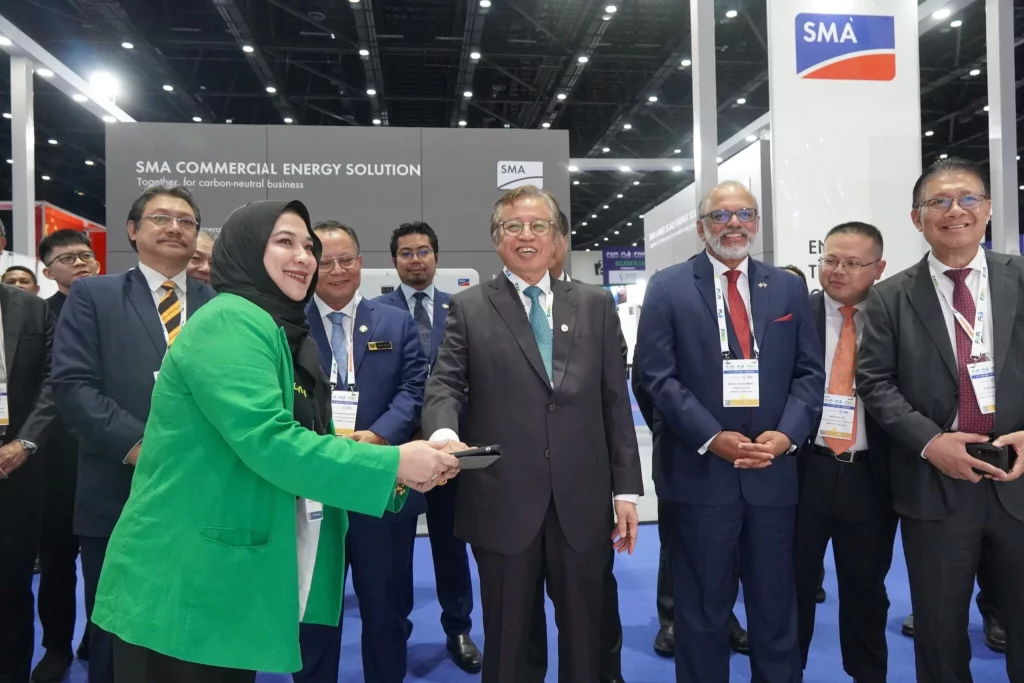
BANGKOK: Premier Datuk Patinggi Tan Sri Abang Johari Tun Openg has shared his vision of making hydrogen readily accessible across Sarawak. Noting how Sarawak Economic Development Corporation (SEDC) Energy is pioneering the hydrogen revolution in Sarawak, he said Sarawak is committed to pioneering innovative solutions that will not only power the state’s economy but also safeguard the environment for generations to come. “SEDC Energy is positioning Sarawak at the forefront of the hydrogen economy thus setting a new standard for sustainable energy in Malaysia and Southeast Asia through visionary initiatives. “A cornerstone of this endeavour is the development of a state-wide network of Flagship Multi-fuel Stations (MPS) with a particular emphasis on hydrogen refuelling. “Our vision is to make hydrogen readily accessible across Sarawak. These stations will not only serve as refuelling hubs for hydrogen vehicles but will also symbolise our unwavering commitment to clean, efficient, and sustainable transportation,” he said. He said this during his keynote address at the Future Energy Asia 2024 here today. Abang Johari said Sarawak’s ambition extend beyond transportation as the Sarawak government envisions hydrogen as a versatile and sustainable feedstock for a multitude of industries. “One particularly promising avenue is the production of Sustainable Aviation Fuel (SAF). By harnessing the power of hydrogen in conjunction with renewable resources like algae oil, we can create a cleaner, greener alternative to conventional jet fuel, significantly reducing the carbon footprint of air travel. “In essence, hydrogen is not merely a fuel; it is a catalyst for a greener, more resilient Sarawak. By embracing hydrogen, we are not only diversifying our energy mix but also unlocking a world of possibilities for economic growth, job creation, and environmental stewardship,” he said.
Sarawak Gas Roadmap
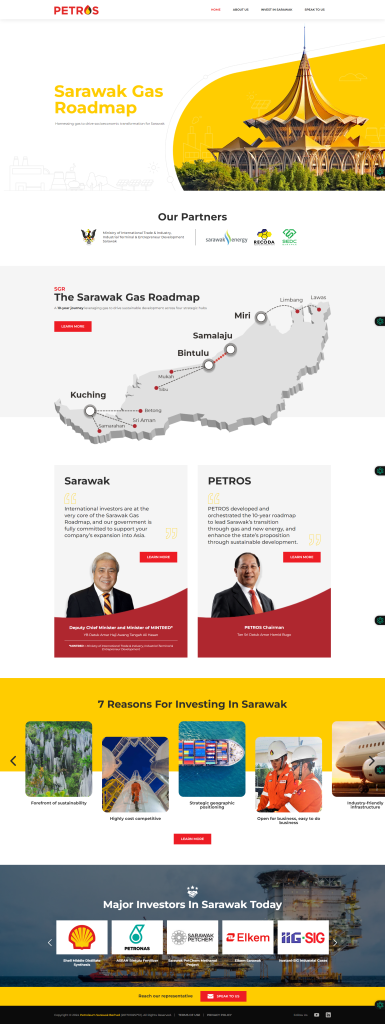
https://sgr.petroleumsarawak.com/
Malaysia’s Sarawak targets green energy powerhouse status

InvestSarawak CEO sees renewables as ‘cornerstone’ of sustainability for state KUCHING, Malaysia — In an ambitious pivot away from its entrenched oil and gas legacy, Malaysia’s Sarawak is working to carve out a new identity as Southeast Asia’s emerging green energy powerhouse, the head of the state’s investment agency told Nikkei Asia. The state, located on the island of Borneo that Malaysia shares with Indonesia and Brunei, possesses immense energy resources. Its operational hydroelectric dams include Bakun and Murum, while the under-construction Baleh Dam is slated to add 1,285 megawatts to the grid by 2026. Sarawak Energy, the state’s power company, estimated that Sarawak has a potential 20,000 MW of hydropower over about 50 sites, of which 3,452 MW has been harnessed. The Bakun Dam, Sarawak’s largest hydroelectric project and one of Southeast Asia’s most significant, was completed in 2011. The 7.4 billion ringgit ($1.56 billion) facility spans the Balui River and boasts a capacity of 2,400 MW. Its construction was part of a broader initiative to reduce reliance on fossil fuels and promote sustainable energy sources within the region. “Sarawak is transcending its traditional energy models to embrace a future where renewable energy is the cornerstone of economic and environmental sustainability,” Timothy Ong, chief executive of InvestSarawak, said in an interview last month. “The future of Sarawak lies in green energy, and our commitment to this vision is unwavering,” Ong said. “Through strategic investments, partnerships, and a dedicated workforce, we are not just imagining a sustainable future; we are actively building it.” The effort is paying off, attracting a slew of foreign direct investment into the green sector. In 2023, Sarawak drew 21.4 billion ringgit in investments, with a significant chunk funneled into manufacturing and renewable energy initiatives, according to Awang Tengah Ali Hassan, the state’s deputy premier, as reported by the state information office earlier this month. State-linked Sarawak Energy signed a memorandum of understanding in October last year with the United Arab Emirates’ Abu Dhabi Future Energy Company, also known as Masdar, as part of joint effort to develop 2 gigawatts of renewable energy projects in Malaysia at an investment value of $8 billion, according to the Malaysian Investment Development Authority. One of the plans includes developing 1 GW of renewable energy projects in Sarawak. Beyond hydropower, Sarawak is also aiming to become a leader in the nascent hydrogen energy industry in the region. Collaborations with Japanese and South Korean companies such as SK Energy, Sumitomo Corp. and Eneos highlight the state’s role in the ongoing international push towards hydrogen as a clean, alternative fuel source. “These ventures bring more than just investments; they bring knowledge and innovation, propelling Sarawak onto the global stage of renewable energy,” Ong said. Sarawak’s green agenda also extends to its burgeoning digital economy, with plans to power tech industries and data centers using renewable energy. The initiative aligns with global demand for sustainable digital infrastructure, marrying digitalization with green energy in a move that Ong describes as “setting the stage for a future where digital and green go hand in hand.” The road to a green future, however, is not without challenges. Sarawak is grappling with the need for skilled manpower and technological skills to drive its renewable ambitions. To this end, Ong said that InvestSarawak is focusing on education enhancements and talent repatriation strategies for “building a future-ready workforce for Sarawak’s renewable energy sector.” Ong said: “We’re focusing on enhancing local education and creating enticing opportunities for our people abroad to return and contribute to our green ambitions. This is more than just a job; it’s about building a sustainable future for our next generations.” Sarawak can play a key role in the renewable energy industry because the state can provide cost-competitive electricity tariffs. Ong reiterated that it will be serving as an anchor for energy intensive digital, advanced manufacturing. “For me, the focus is not on the value of the investment,” he said. “My focus is on our economic complexity. On investment value, it’s pointless if we don’t have sophistication in our supply chain and that is what keeps your multinationals in the state, so you can always have the attraction [for] retention of talents.”
China’s largest green hydrogen refuelling station is selling H2 at a seventh of the cost of the fuel in California

Sany claims its integrated production and fuelling complex supplies hydrogen at cost parity with diesel The largest integrated green hydrogen production and refuelling complex in China is able to supply hydrogen at 35 yuan per kilo ($4.86/kg), near cost parity with diesel, according to reporting by the Chinese newspaper Hunan Daily. Unlike the vast majority of China’s hydrogen refuelling stations, engineering firm Sany’s filling spot in the city of Changsha, Hunan province, which entered into a testing phase this week, produces its own H2 onsite via alkaline electrolysers, thus avoiding transportation costs. The electrolysers are capable of producing up to 180kg an hour, but the pumps can only dispense two tonnes per day — enough to fill up more than 100 vehicles. By way of comparison, hydrogen fuel is being sold at the pump elsewhere in China for 75 yuan per kilo — which is still cheaper than in other countries. The largest H2 fuel market in the US, California, is currently seeing pump prices of $36/kg — more than seven times higher than the Changsha facility — while in Germany, Europe’s largest market, current per-kg prices are between €12.85 and €15.75 ($14-16.60). If the price of H2 fuel in China drops below 30 yuan per kilogram, such as via future technology upgrades, “hydrogen fuel vehicles are more competitive than diesel vehicles” even without subsidies, said Wang Zhimin, director of Sany Hydrogen Energy Hydrogenation Equipment Institute. While hydrogen is often highlighted as a way to decarbonise heavy, long-haul transport, the switch from existing trucks will depend on logistics firms committing to high upfront costs or renting from emerging pay-to-use schemes such as a programme run by Shell in Germany. However, because diesel is already a relatively expensive fossil fuel, particularly in markets with higher taxes, some green hydrogen investors have suggested that the cost gap is easier to bridge than with cheap natural gas or even grey H2, potentially making it an easier sell for use in road transport than by industrial offtakers. But others have pointed out that most of the pump price at hydrogen refuelling sites is not based on the price of the H2 molecule, but the capex of the filling station as well as extra costs from compression and maintenance. While Sany appears to be leveraging economies of scale, the 37-million-yuan station will not be open to the public but rather supply fuel-cell trucks used in company operations — which could limit its utilisation rate. Similarly, although the engineering firm uses solar panels to power the electrolysers, it is unclear whether the complex has another source of renewable electricity or uses grid power for production during night.
The Netherlands announces subsidies for €998,330,000 for production of renewable hydrogen with a electrolysers
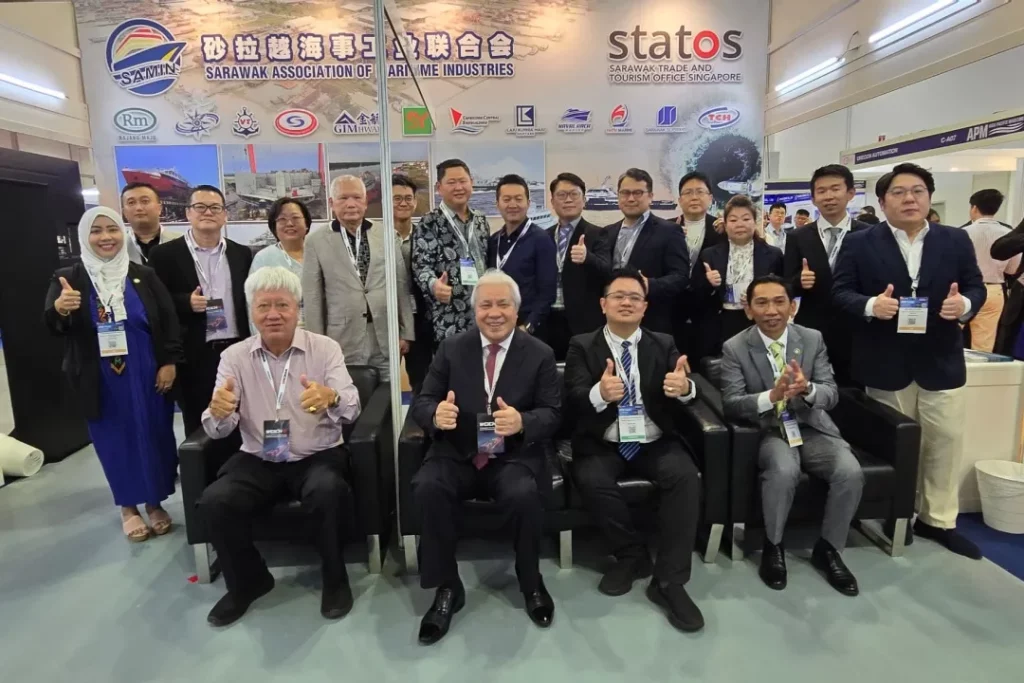
The Netherlands announces subsidies for €998,330,000 for production of renewable hydrogen with a electrolysers. Do you want to produce renewable hydrogen with an electrolyser? And do you have plans for this? Then you will soon be able to apply for a subsidy via the OWE scheme again. To help you prepare your application, we provide you with an overview of the changes compared to the OWE in 2023. What’s different in 2024? Requirements for the installation 🔥 What about we co-host a webinar? Let’s educate, captivate, and convert the hydrogen economy! Hydrogen Central is the global go-to online magazine for the hydrogen economy, we can help you host impactful webinars that become a global reference on your topic and are an evergreen source of leads. Click here to request more details Ranking of your application Your maximum subsidy amount Feasibility of your project New mandatory appendix: supply of renewable electricity purchase Realizing your installation

